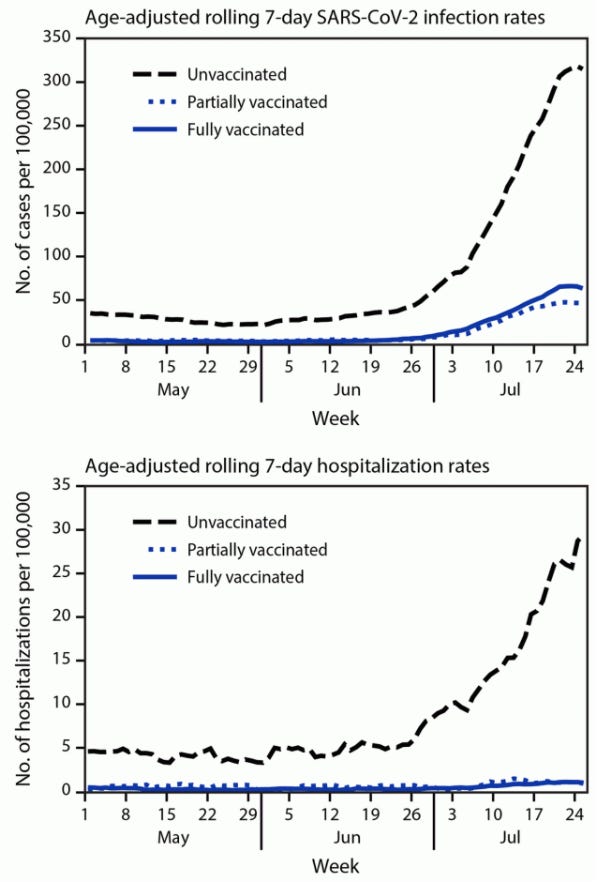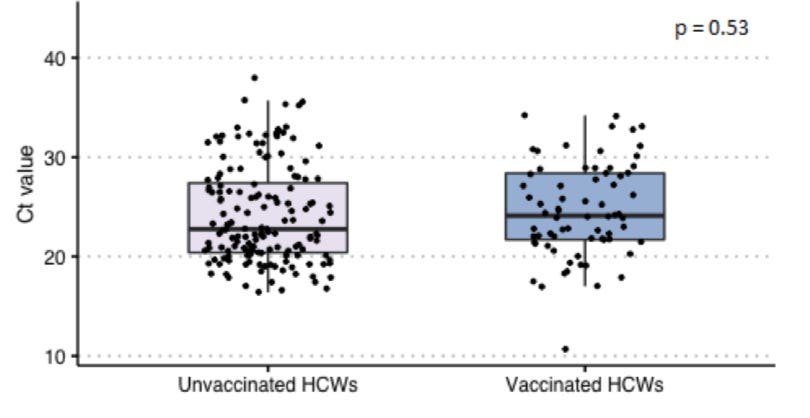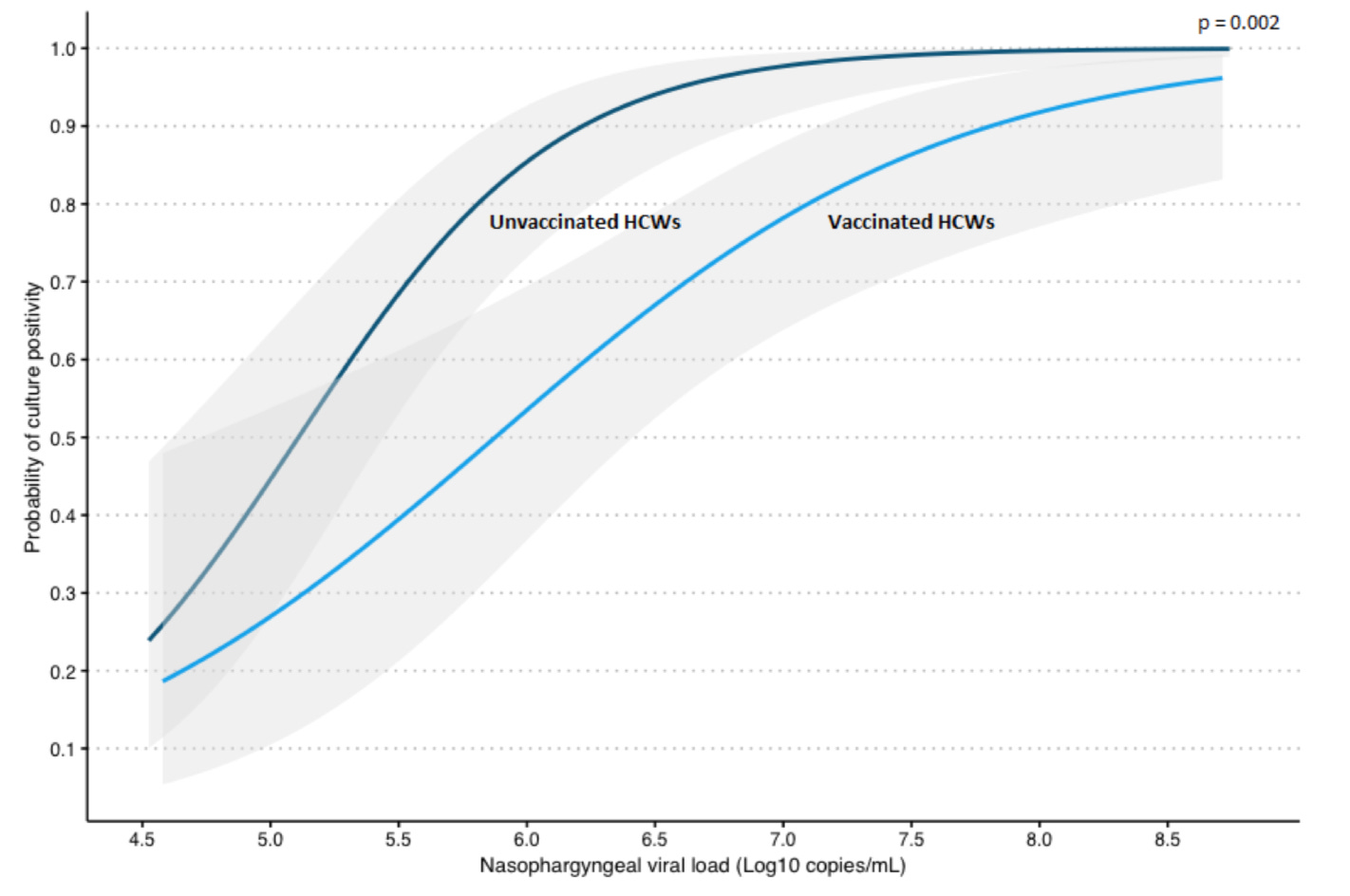We’re learning more and more about how our vaccines hold up against Delta. I feel like I’m drinking out of a firehose. So, here’s an attempt to get you up to speed…
What we knew
Last time I updated you (see August 6th post here), the science was telling us four things:
Vaccines continue to protect amazingly against hospitalization and death. See, yet another, study that came out yesterday here (figure below);
Efficacy against mild and moderate disease is reduced. This could be from Delta or waning immunity or both. This is why we eventually need the third dose;
Viral load among vaccinated is the same as unvaccinated;
…in the first six days. Then the vaccine kicks in and there’s a far faster decline in the load than among unvaccinated.
More and more science is confirming these four things, which means we are pretty confident in this story.

There remained to be one big, unanswered question though
If the Delta viral load is the same among vaccinated compared to unvaccinated, are vaccinated contagious? In other words, are vaccinated now part of the transmission chain? Because they weren’t before Delta.
Viral load doesn’t necessarily mean contagiousness. Viral load is simply the amount of virus we can find in your system. It can be detected using those PCR nasal swabs or in blood and bodily fluids. If a PCR test has a value (called infection cycle threshold [Ct]) of <30, then you’re considered “positive”. When the virus is barely present in your nose, the machine needs to run more cycles before it can detect virus. In this case, the Ct value is high. (Ct is counterintuitive; it has an inverse relationship with viral load).
However, and importantly, a positive result does not tell the difference between viable and nonviable virus (or contagious or non-contagious virus). In other words, a positive test does not necessarily indicate that a person is infectious.
So, are breakthrough cases as contagious as unvaccinated cases?
We needed a special study to answer this called: “viral viability through replication in cell culture”. Basically this is a lab study to see if the virus found among vaccinated people replicate in a petri dish.
We just got the results from one study. Scientists studied 161 breakthrough cases among healthcare workers (HCWs) in the Netherlands. The average age of the HCWs was 25.5 years and all infections were mild and did not require hospital admission. The PCR positive swabs were tested for the viral load (i.e. Ct value) AND tested for the presence of infectious virus (opposed to noninfectious virus) in that viral load.
What did they find?
The viral load was the same with vaccinated compared to the unvaccinated samples. This is not new. It just confirms #3 in this post above. We saw this in the famous CDC study on the Massachusetts outbreak among vaccinated as well as other studies.
7 out of 10 (68.6%) vaccinated HCWs were positive for infectious virus compared to 8.5 out of 10 (84.9%) unvaccinated HCWs were positive for infectious virus. This tells us that if you’re vaccinated and you come in contact with the virus, you’ll likely to be less contagious than unvaccinated people. But not all the time.
Bottom Line: Vaccines continue to help on the individual-level: they keep you out of the hospital. They also continue to help on a population-level: You play less of a role in the transmission chain than unvaccinated. If and when a vaccinated person is contagious, it’s for less amount of time compared to unvaccinated (6 days vs. 18 days). This will no doubt help end the pandemic. But, even given this, we all still need to wear our masks to stop transmission at every corner.
Love, YLE







In this post you say the difference is 6 vs 18 days (for v vs uc) but then link to a previous post where you say 9 to 16 days. Would you be able to clear that up?
I appreciate your articles and save them to return to. But what I am still unclear on the viral loads of unvaccinated people who have gotten covid within the past few months relative to vaccinated and unvaccinated. In other words, where do previously infected people fit in terms of risk for other people near in terms of transmission?